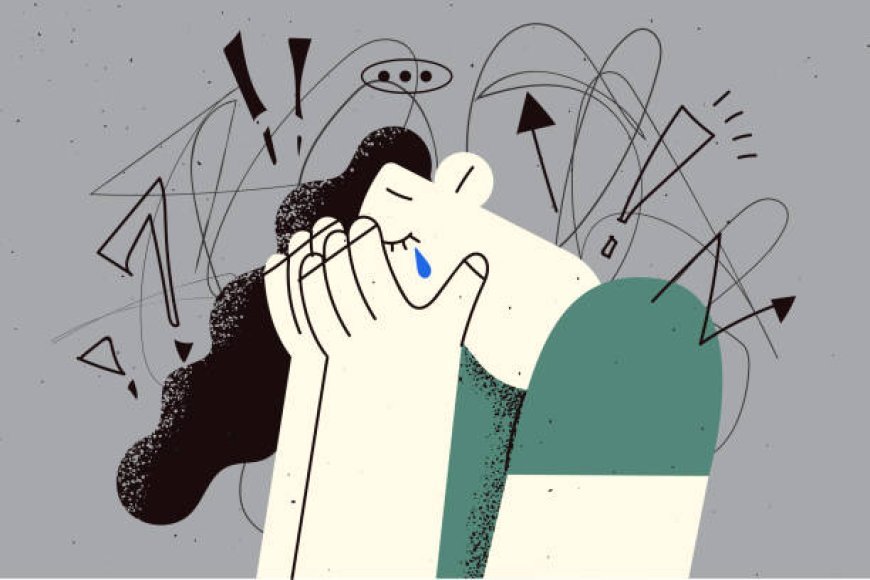Obsessive-compulsive disorder is known as unwanted repetitive behaviours, intrusive involvement in the life of the individual, difficult to prevent impulses, obsessions that mean thoughts, and repetitive behaviors that the individual feels obliged to do despite his/her obsessions, seriously impairing his/her functionality, with the existence of compulsion. (DSM-5 APA, 2013)
Obsessions are often characterized by situations like smearing something, recurring doubts, thoughts of harming oneself or another, symmetry problems, excessive handling of sexual issues, and fear of getting dirty. For example, a woman who thinks that the house cannot be cleaned when a guest comes to her house from outside or a man who thinks that he will constantly harm himself or someone else in his mind can be given as an example. Compulsions are more likely to occur through behavior. For example, washing and cleaning something tons of times, performing behaviors in a repetitive way, counting, organizing, accumulating, and controlling things frequently are the most common compulsions (Karslıoğlu and Yüksel, 2007). In addition, some thoughtful behavioral and rituals can be defined as compulsion.
Diagnostic Criteria
According to DSM-5, OCD is under the title of Obsessive-Compulsive and Related Disorders.
A. The existence of obsessions, compulsions or coexistence of both Obsessions
Compulsions are defined in two ways:
1. Repetitive thoughts, motives and symbols that come compulsively and unintentionally, causing anxiety and distress in the individual.
2. Individuals either ignore these thoughts, motives or symbols and try to suppress them, or tries to confront these thoughts, motives, or symbols with another thought or behavior.
Compulsions are defined in two ways:
1. Repetitive behaviors or thoughtful actions that individuals feel compelled to do despite their obsessions or due to harsh rules to be followed
2. The individual performs these behaviors with the aim of avoiding anxiety or distress and reducing a fearful situation.
B. Obsessions, compulsions cause severe loss of function in the individual
C. Obsessions and compulsions are not caused by a health condition or substance use in the person
D. Obsessive-compulsive disorder cannot be explained by the symptoms of another mental disorder. Individuals with obsessive-compulsive disorder has many dysfunctional thoughts. Like thinking about something forbidden would harm him/her, low levels of tolerance for uncertain things, perfectionism, etc. In order for the diagnosis of OCD to be made, obsessions and compulsions must take a serious time in the life of the individual, impair its functionality and cause clinically significant distress. (DSM-5 APA, 2013). In addition, OCD individuals generally have personality traits such as stubbornness, stinginess, extreme seriousness, coldness, stubbornness. (Yılmaz, 2018).
Factors Causing Obsessive Compulsive Disorder
Factors causing obsessive-compulsive disorder include temperament factors, environmental factors, genetic and physiological factors. Heredity also plays a significant role in the emergence of the disease. In addition, it can be said that loss, disaster, traumatic experiences have an effect on the emergence of the disease. (Çataloluk ve Karaaziz, 2023). In the case of OCD, there is excessive activation in certain parts of the brain. In addition, men suffer from OCD at an earlier age than women.
Treatment
OCD can be controlled with some psychiatric medications. These drugs are intended to increase serotonin levels. Therapy sessions can be conducted in patients to overcome obsessions and compulsions by Cognitive behavioral therapy. Patients can face these obsessive behaviors through the therapy.
References
Karslıoğlu, E. H., & Yüksel, N. (2007). Obsesif kompulsif bozukluğun nörobiyolojisi. Klinik Psikiyatri, 10 (3), 3-13.
Çataloluk, A., & Karaaziz, M. (2023). Obsesif Kompulsif Bozukluğun Bilişsel Davranışçı Terapi Yaklaşımı ile Tedavisi: Olgu Sunumu. Sosyal, Beşeri ve İdari Bilimler Dergisi, 6 (6), 781-793.
Yılmaz, B. (2018). Obsesif Kompulsif Bozukluk Tedavisinde Güncel Yaklaşımlar. Lectio Scientific, 2(1), 21-42.




















































































